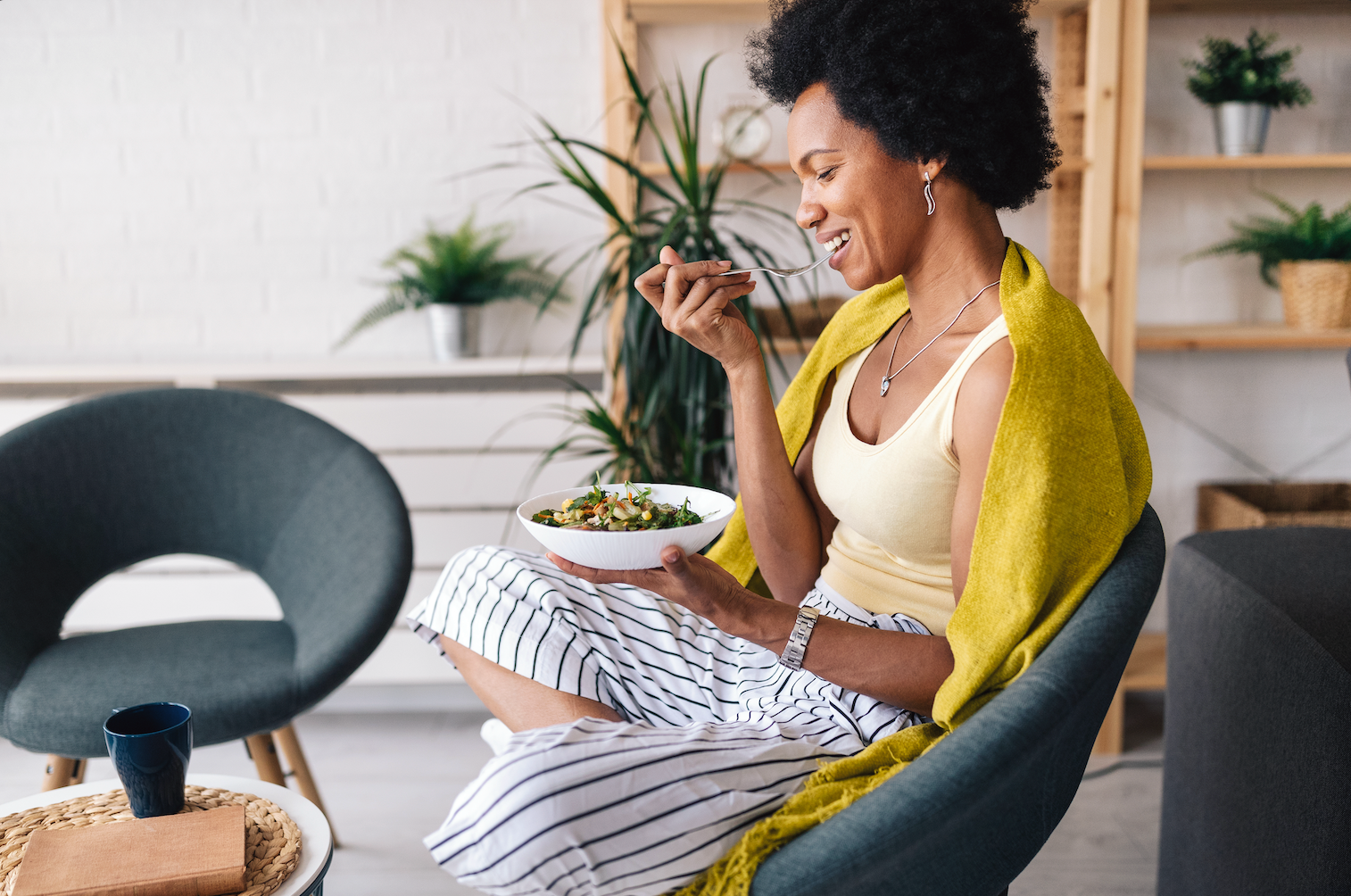
Less Than 5% of Americans Get Enough of This Nutrient
Boost your health with fiber! Discover why it's essential and easy ways to add more to your diet.
PSA: most of us aren’t getting our fair share of fiber. As in, less than 5%. And although shocking, this isn’t totally surprising. After all, the Standard American Diet is practically devoid of fiber. But when it comes to nourishing a healthy, thriving body (and balanced hormones!), this dietary powerhouse is crucial. With that in mind, we come bearing high-fiber ingredient inspo. Plus, we’re sharing the 411 on fiber—why it’s important, how much you ideally need, and where to get it.
What is fiber?
It’s a type of carb. Found abundantly in plant foods (think: greens, grains, and seeds), it aids in digestion, promotes bowel regularity, supports disease prevention, and even supports hormone balance. One of the most fascinating facts about fiber? Our bodies don’t digest it. Instead, it passes relatively intact through the digestive system.
Why do we need fiber?
Think of fiber as nature's broom. It sweeps through our gut, removing waste, toxins, and excess hormones (we’re looking at you, estrogen). There are two main types of fiber: soluble and insoluble. Together, these fibers form a dynamic duo.
🌱 Soluble fiber dissolves in water, forming a gel-like substance that helps regulate blood sugar levels and lower cholesterol. A few examples include beans, lentils, nuts, and seeds.
🌱 Insoluble fiber, on the other hand, adds bulk to stool (facilitating smooth digestion and preventing constipation). Insoluble fiber is predominantly found in veggies and whole grains.
Recommended Daily Intake
According to dietary guidelines, the recommended daily intake of fiber is 25-30 grams. Unfortunately, most Americans are falling short at under 15 grams.
Why aren’t we eating enough fiber?
There are multiple reasons for this, but the main culprit lies in the prevalence of ultra-processed foods. These are often stripped of their natural fiber content during manufacturing, leaving behind preservatives and empty calories. Furthermore, there are misconceptions about how high-fiber foods taste—and for that matter, how to prepare them.
Easy ways to eat more fiber
Good news! Increasing your fiber intake doesn't require pounding vegetables all day. With a few simple tweaks, you can easily incorporate more fiber-rich foods into your meals.
- Start by swapping out refined grains (like traditional pasta) for whole grains like brown rice, quinoa, and 100% whole wheat bread.
- Think in color: Add a variety of fruits and vegetables to your plate, focusing on colorful options like berries, leafy greens, artichokes, and cruciferous veggies (broccoli, cauliflower, purple cabbage, etc.). And when in doubt, leave the skin on! Up to 31% of the total amount of fiber in a vegetable can be found in its skin.
- Bulk up your yogurt and cereal bowls with chia and ground flax. You can also add psyllium husk to your smoothies!
Snack smart: Reach for a bag of lentil chips, celery with hummus, roasted chickpeas, a nut-based trail mix, seedy crackers with cottage cheese, or these brownie batter protein bombs.
Sample meal plan (with over 40 grams of fiber!)
To get your creative gears turning, here’s a sample day of eats with fiber at the forefront:
🥣 Breakfast
Overnight oats made with: 1/2 cup rolled oats (4 grams of fiber) + 1 tablespoon chia seeds (5.5 grams of fiber) + 1 tablespoon flaxseed meal (2 grams of fiber) + 1/2 cup almond milk (1 gram of fiber) + 1/2 cup mixed berries (3-4 grams of fiber)
Total: 15+ grams of fiber
🍎 Mid-morning snack
1 medium apple (4.5 grams of fiber) and 1 ounce of almonds (3.5 grams of fiber)
Total: 8 grams of fiber
🥗 Lunch
Quinoa salad with: 1/2 cup cooked quinoa (3 grams of fiber) + 1 cup chopped mixed veggies, like tomatoes and cucumber (4-5 grams of fiber) + 1/2 cup cooked lentils (8 grams of fiber) + 1 hard boiled egg (0 grams of fiber) + 2 tablespoons of vinaigrette dressing (0 grams of fiber)
Total: 14-16 grams of fiber
🥕 Afternoon snack
Carrots with hummus: 1 medium carrot (2 grams of fiber) and 2 tablespoons of hummus (2 grams of fiber) OR a cup of edamame (8 grams of fiber)
Total: 4+ grams of fiber
🍲 Dinner
Salmon with: 4 ounces of grilled salmon (0 grams of fiber) + 1 cup steamed broccoli (3 grams of fiber) + 1 cup roasted Brussels sprouts (4 grams of fiber) + 1/2 cup cooked brown rice (2-3 grams of fiber) + drizzle of olive oil and lemon (0 grams of fiber)
Total: 10+ grams of fiber
Need more inspo?
Take a peek at our plant-forward recipes. Ultimately, by prioritizing whole foods, you can easily increase your fiber intake. Oh, and start slow. Quickly ramping up your fiber intake isn’t the best idea (IYKYK). Also, cooking your veggies—through boiling or roasting, etc—can reduce the fiber by almost half. This is helpful if you’re new to eating fiber.
